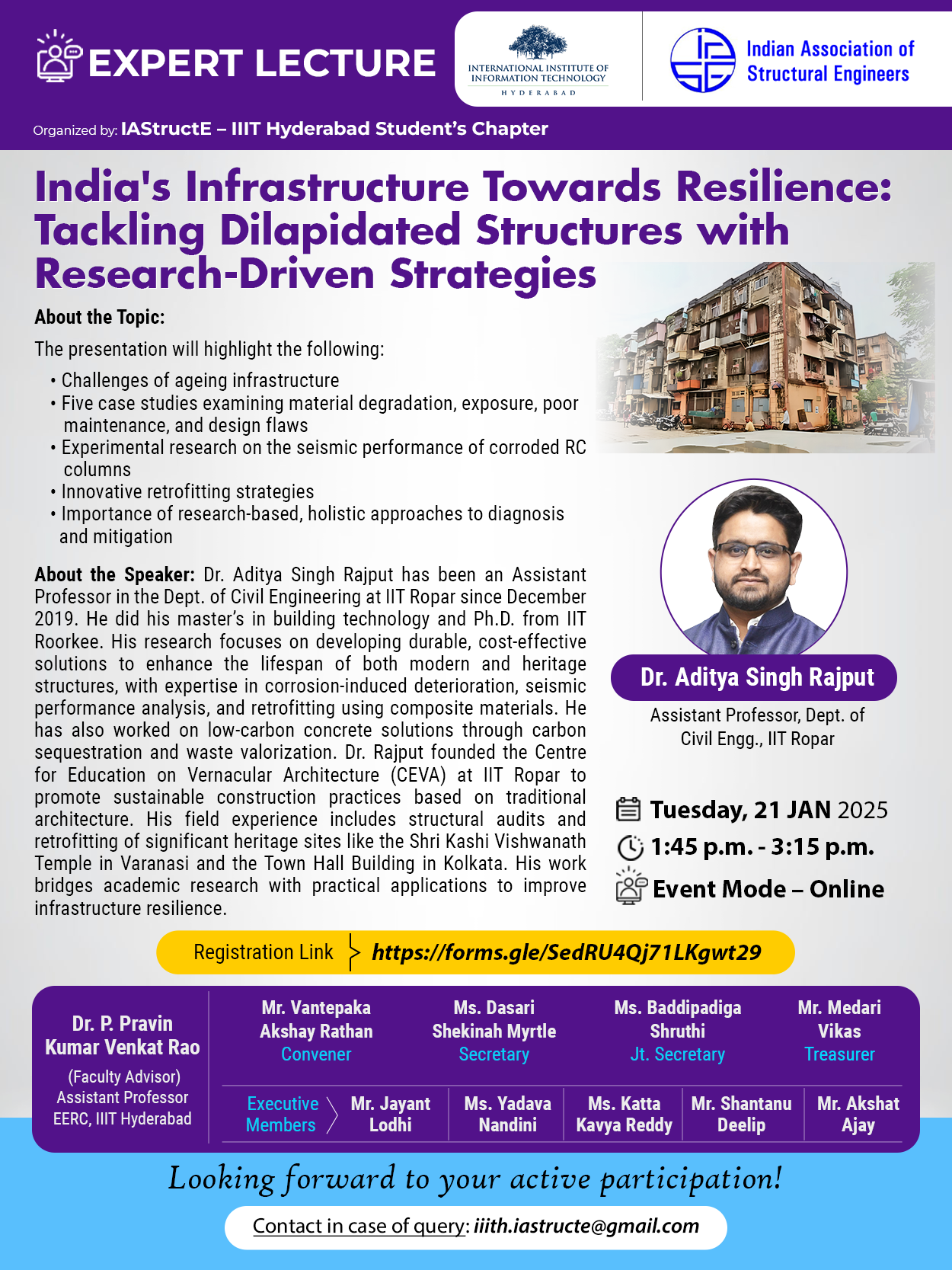

The IAStructE – IIIT Hyderabad student chapter of the Earthquake Engineering Research Centre hosted an insightful lecture by Dr. Aditya Singh Rajput, Assistant Professor at the Dept. of Civil Engineering, IIT Ropar, focusing on the critical issue of India’s ageing infrastructure on 21st January 2025. The lecture, titled “India's Infrastructure Towards Resilience: Tackling Dilapidated Structures with Research-Driven Strategies”, highlighted the alarming state of deteriorating buildings across the country. Dr. Rajput discussed how structural failures in many buildings are often due to material degradation, design flaws, and inadequate maintenance. These issues often remain unnoticed until they result in severe damage, raising significant concerns for both safety and long-term sustainability. The lecture emphasized the need for proactive measures and innovative repair solutions to enhance the resilience of existing infrastructure.
Dr. Rajput presented statistics from 1995 to 2015, revealing that infrastructure failures had led to over 28,000 deaths and 11,500 injuries, with residential, commercial, and bridge structures being the most affected. This emphasized the urgency of addressing dilapidated buildings, which continue to endanger lives nationwide. He also discussed several case studies from India and abroad. These case studies highlight key challenges in building durability and maintenance. A G+8 commercial building faced corrosion due to moisture exposure, emphasizing the need for proper waterproofing and material selection. A 70-year-old hospital suffered structural distress after unplanned modifications, stressing the importance of assessing load-bearing capacity before adding floors. A 5-year-old institutional building had severe seepage due to inadequate waterproofing, showing the consequences of poor construction practices. Meanwhile, a 40-year-old hospital highlighted the risks of poor maintenance. Lastly, a 50-year-old commercial building faced facade deterioration, illustrating the need for periodic refurbishments.
The speaker also discussed the role of corrosion in the weakening of infrastructure. He presented findings from his research on the seismic behaviour of corroded columns, showing how corrosion significantly reduces the strength, stiffness, and deformability of structures. Through his experiments with UHPFRC (Ultra-High-Performance Fiber-Reinforced Concrete) and GFRP (Glass Fiber-Reinforced Polymer), he demonstrated how retrofitting these materials can effectively restore seismic performance, even in severely corroded columns. While retrofitting can mitigate the negative effects of corrosion, Dr. Rajput also stressed the importance of proactive maintenance and regular inspections to ensure the long-term stability of buildings. Further, he emphasized the importance of a two-way approach to improving the resilience of India's infrastructure: designing new structures with materials and methods that minimize the risk of deterioration, as well as developing innovative repair and retrofitting strategies for existing buildings. By focusing on these strategies, one can ensure the longevity, safety, and sustainability of India’s infrastructure.

Visitors Count